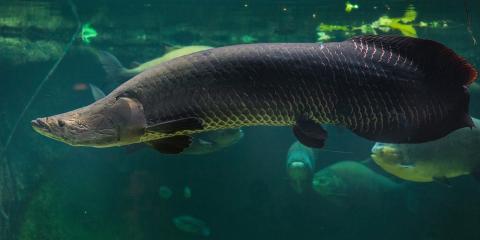Physical Description
These medium-sized, long-tailed sparrows have gray and brown feather coloring. Their wings and back are gray with chestnut-brown dotted streaks.
Their heads are more distinguishable. Adults have a cinnamon-red crown (the top of their head), a thick pointed bill, a white ring around each eye and whitish-gray stripes across their face. Juveniles do not develop their red crown until adulthood.
There are some regional differences in coloration with rufous-crowned sparrows. Individuals that live along the Pacific Coast have more of an overall reddish coloring, while those that live on offshore islands often have darker feathering.
Size
Native Habitat
Lifespan
Communication
Males sing a jumbled melody of notes to establish their territory, which they defend from other males. They also have a harsh-sounding alarm call that sounds like "dear-dear-dear," which they use to alert other sparrows to the presence of a nearby predator.
Food/Eating Habits
Rufous-crowned sparrows eat mainly seeds and plant material in the winter, and insects in the spring and summer.
They search for food while slowly walking on the ground. These birds are most often seen feeding among low shrubs and grasses, and they rarely forage for food out in the open. They are not strong fliers.
Social Structure
Reproduction and Development
Males and females are thought to be monogamous and form pair bonds during the breeding season. Females build sturdy, cup-shaped nests low to the ground, well-hidden among rocks or plants. They lay clutches of usually three to four pale, bluish-white eggs, which are incubated by the female before hatching. Both males and females help care for the nestlings.
Rufous-crowned sparrows have a few methods of protecting their nest that they use to distract predators: one of these is the "broken wing display," where the sparrow fakes a wing injury and draws the predator's attention away from the nest before flying away.
Help this Species
- Be a smart consumer. Choose products made with sustainable ingredients, such as Smithsonian certified Bird Friendly coffees, which support farmers striving to limit their impact on wildlife and habitat.
- Choose your pets wisely, and do your research before bringing an animal home. Exotic animals don’t always make great pets. Many require special care and live for a long time. Tropical reptiles and small mammals are often traded internationally and may be victims of the illegal pet trade. Never release animals that have been kept as pets into the wild.
- Be a responsible cat owner, and keep cats indoors or under restraint when outside. Never release animals that have been kept as pets into the wild.
- Support organizations like the Smithsonian’s National Zoo and Conservation Biology Institute that research better ways to protect and care for this animal and other endangered species. Consider donating your time, money or goods.
- Conservation starts with you! Join a citizen science project, such as FrogWatch or Neighborhood Nestwatch, where you can help collect valuable data for scientists. Encourage your friends and family to get involved too.
- Plant native flowers in your garden to help feed resident and migrating pollinators. You'll make your lawn beautiful and help wildlife at the same time!



